If you’re looking for the best gardening books, I’ve compiled a list for you.
This list comprises my go-to books.
So… ready?
Here’s my great big list of the best gardening books.
The Best Gardening Books
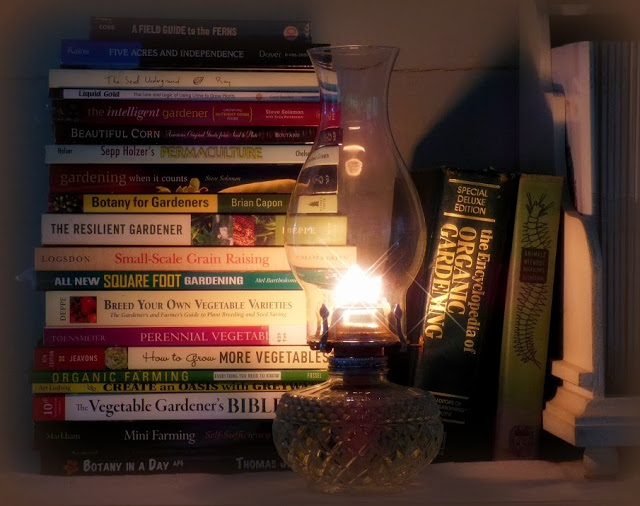
Original photo by my friend Jean at TheCottageonPilgrimsFarm.blogspot.com
A good garden takes hard work and experimentation – but a good gardening library is also a great place to start gathering the ideas and practices that will cut out a lot of the hard work on the path to expert gardening.
Good gardening books allow you to be mentored by great gardeners even if you never get to meet them in person.
Read their words, then go apply them in your garden.
The following are the must-have gardening books that should be in every gardening library.
Gardening When It Counts
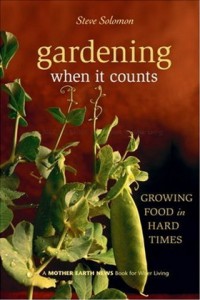 Gardening When It Counts is a classic survival gardening book from Steve Solomon.
Gardening When It Counts is a classic survival gardening book from Steve Solomon.
It contains a lot of good information and thoughts on feeding yourself under adverse conditions.
It’s also where I got my idea of melon pits, among other things.
Steve Solomon doesn’t shy away from extreme gardening measures.
He also dispels the myth that you need mulch or raised beds to create a productive garden.
He also covers good hoe use and the power of properly sharpening of gardening tools.
You Can Farm
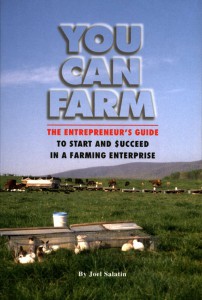 World-famous writer and farmer Joel Salatin has claimed that he’s a “grass farmer.”
World-famous writer and farmer Joel Salatin has claimed that he’s a “grass farmer.”
What he means is that grass feeds his very profitable livestock operation.
Though You Can Farm isn’t truly a gardening book, it is one of the most encouraging books you’re likely to read on living an agricultural or agrarian life and profiting in the process.
After reading You Can Farm, you’ll want to leave your desk job forever.
And you can.
Grow Or Die: The Good Guide to Survival Gardening
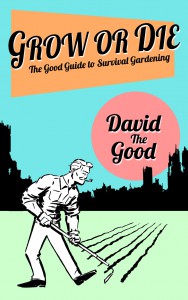 Grow Or Die: The Good Guide to Survival Gardening teaches you how to grow crops under stress.
Grow Or Die: The Good Guide to Survival Gardening teaches you how to grow crops under stress.
It’s also a wonderful crash-course in starting your first garden.
If you want to be prepared, know how to survival garden and grow more food with less work, this is the book for you.
Yes, I wrote it, so I’m somewhat partial, but the 5-star reviews back me up.
For a prepper on a budget or someone who just wants to feed their family organically from their own land, this is a must-have gardening book.
The Planet Whizbang Idea Book for Gardeners
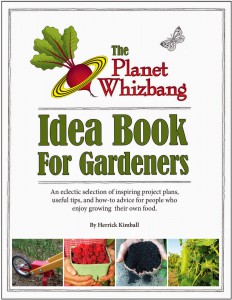 Herrick Kimball is a Christian agrarian, philosopher and inventor.
Herrick Kimball is a Christian agrarian, philosopher and inventor.
He’s built a successful home business by solving problems – and the problems he solves in The Planet Whizbang Idea Book for Gardeners will make your life a lot easier.
This book by the inventor of The Whizbang Chicken Plucker, The Whizbang Wheel Hoe and the best clothespins I’ve ever tried, is filled with great gardening ideas, snippets from America’s agricultural past and wonderful illustrations.
Perennial Vegetables
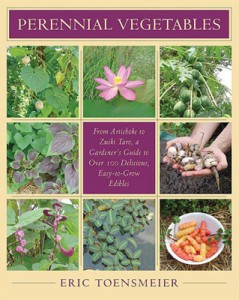 Eric Toensmeier’s book became the must-have book edible perennial vegetables when it was released a few years back.
Eric Toensmeier’s book became the must-have book edible perennial vegetables when it was released a few years back.
Perennial Vegetables looks at veggies you ONLY HAVE TO PLANT ONCE.
Warning: due to the abundance of tropical vegetables in this book, it’s likely to make temperate gardeners cry.
I’ve grown many of the vegetables he’s recommended and I’m still checking back with this book and finding more worthwhile additions to my food forest.
If you like to grow plants that don’t require tilling, reseeding and hoeing… this book is for you.
Gaia’s Garden: A Guide To Homescale Permaculture
Fruitcake name/killer information.
Gaia’s Garden will transform the way you look at food growing, gardening and the ecosystem around your house.
I read it three times and still skim it now and again for additional nuggets of information I may have missed.
Permaculture is exciting stuff – and this book applies it to a homestead in a compelling way.
Learn to design your garden around you so you work less for higher yields that just increase over time as your trees and perennials mature.
Compost Everything: The Good Guide to Extreme Composting
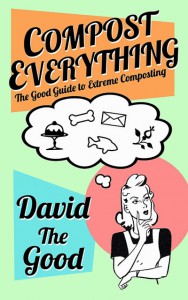 Feed the soil and the soil will feed you. Compost Everything shows you how.
Feed the soil and the soil will feed you. Compost Everything shows you how.
Think you can’t compost meat? Or bread? Or sewage?
This book throws out the composting rulebook and will utterly transform the way you look at composting.
You’ll learn how to make your own fish emulsion, turn rotten beef stew into delicious homegrown melons, capture every bit of fertility you can for your homestead… and a ton more. Plus it’s funny.
A must-have for cheapskates, survivalists and people who are sick of throwing “trash” into landfills.
All New Square Foot Gardening
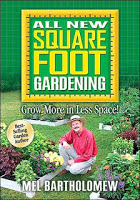 Mel Bartholomew’s Square Foot Gardening has likely launched more gardens than any other book.
Mel Bartholomew’s Square Foot Gardening has likely launched more gardens than any other book.
There’s a reason it’s sold over 2 million copies!
For folks with poor soil and limited space who would like a high-yielding backyard garden that’s completely and utterly under control, this book is for you.
It’s not my preferred method, but I have tried it in the past and found that it works well. It also got my wife into gardening and I’m very thankful to Mel for that.
This of this as gardening for accountants and engineers: a perfectly ordered system with perfect soil.
Gardening Without Irrigation

This is how I grow my corn and other field crops without having to water.
The link above takes you to the free download page of Project Gutenberg… or you can click here or on the image and buy a hard copy.
If things collapse, you might want one.
Or – if you’re not concerned about aesthetics – just print the .pdf.
It’s a compelling read that will make you completely rethink your water usage in the garden.
How To Grow More Vegetables
How To Grow More Vegetables by John Jeavons is a great jump into biointensive gardening.
This method relies on little to no external inputs and gives you excellent results, even in sand.
I know. I’ve tested it.
The emphasis on growing your own compost is compelling, as is the almost complete lack of infrastructure required for getting good yields.
The only cons are that the book is somewhat self-promotional at times and some of the information is a bit dry.
But – no brick, wood or other bed boundaries are required with this excellent method. Just you, a spading fork, a spade, compost, seeds and the good earth.
Sepp Holzer’s Permaculture
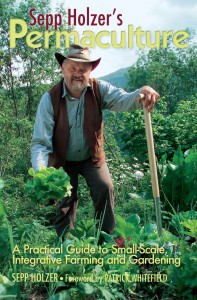 Sepp Holzer’s insight and experimentation are infectious.
Sepp Holzer’s insight and experimentation are infectious.
Holzer talks about dealing with problematic government officials, working with trees inside complete ecosystems, building simple but excellent shelters with logs and other found materials, cultivating mushrooms and livestock… the book is packed.
He’s also experimented extensively with creating microclimates which is a particular fascination of mine.
Pick up a copy of Sepp Holzer’s Permaculture. It’s excellent.
Teaming With Microbes
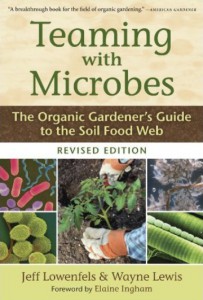 Teaming With Microbes will make you think differently about the unseen world of the soil.
Teaming With Microbes will make you think differently about the unseen world of the soil.
What many gardeners don’t consider is how the soil microecology effects plant growth.
With a healthy soil web, your crops will thrive, just as a healthy complement of gut bacteria helps us thrive.
If you’re a fan of compost tea, this book is just what the soil doctor ordered.
WARNING: You’d BETTER be a fan of compost tea or these authors will drive you mad.
Mini-Farming: Self Sufficiency on 1/4 Acre
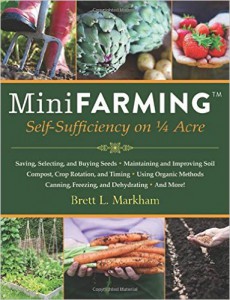 Mini Farming: Self-Sufficiency on 1/4 Acre by Brett Markham is a non-stop seller.
Mini Farming: Self-Sufficiency on 1/4 Acre by Brett Markham is a non-stop seller.
It just never, ever stops selling.
And there’s a reason for that: it’s a dream of many to become self-sufficient; however, they think it takes a lot of space.
Markham’s ideas are based on everything from permaculture to Square Foot Gardening and you’re certain to be impressed by the small amount of space in which he manages to grow tons and tons of food.
Bonus: He also covers chickens and has a section on how to build a simple homemade chicken plucker.
Joy of Gardening
This older gardening book is worth having because it and focuses on a simple and productive style of gardening that is unfortunately no longer in favor.
Dick Raymond shares his methods for wide row gardening and how he raises large yields in his backyard with simple time-tested methods that he’s tweaked for better results.
Yes, Joy of Gardening is also a bit of a tract for the Troybilt tiller (yet Raymond also shares how he increases soil fertility while tilling), but I still recommend it highly if you’re a bit tired of reading books proclaiming “RAISED BEDS ARE THE BEST EVAR!”
The Resilient Gardener
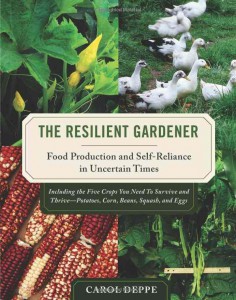 Carol Deppe’s book The Resilient Gardener covers the crops you need when times are tough.
Carol Deppe’s book The Resilient Gardener covers the crops you need when times are tough.
With her help, you can grow and preserve nourishing caloric staples no matter what.
Eggs, squash, beans and corn. Deppe also covers storage and seed saving and she’s truly on a modern expert on the latter.
This book is also very good for preppers and those on gluten-free diets (as Deppe is herself).
I’ve come back to this book multiple times during my Seminole pumpkin breeding project.
Gardening Without Work
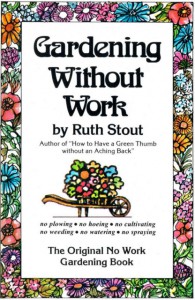 The late Ruth Stout paved the way to the modern “lasagna gardening” method and the runaway film Back To Eden and its deep mulch approach to growing vegetables.
The late Ruth Stout paved the way to the modern “lasagna gardening” method and the runaway film Back To Eden and its deep mulch approach to growing vegetables.
Gardening Without Work shares Ruth Stout’s method of throwing away her hoe and simply crushing weeds into submission through liberal applications of straw.
This method was a LOT better a decade ago before the advent of aminopyralid herbicides contaminated most of the hay and straw in this country.
It still makes great sense if you have safe amendments; but chances are, you don’t.
Ruth is still a lot of fun to read and I recommend her book.
Gardening Books To Fill The Gaps
The following books excellently cover niche gardening topics.
Though not everyone is interested in literally growing their own bread or attracting a spouse through creating a permaculture paradise, these are all very worth reading.
Small-Scale Grain Raising
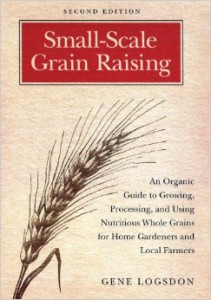
Create Your Own Florida Food Forest
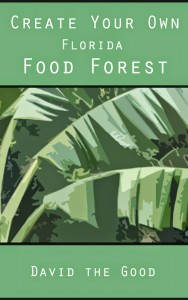
Totally Crazy Easy Florida Gardening
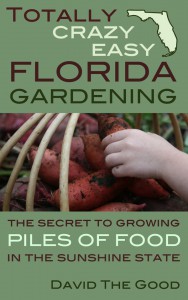
Edible Landscaping
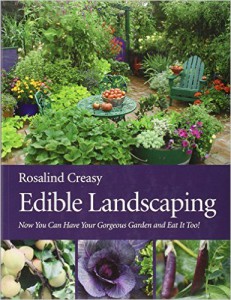
Seed To Seed
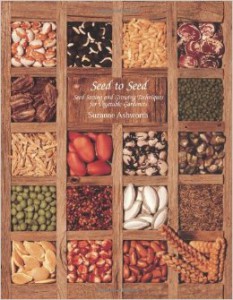
The Intelligent Gardener
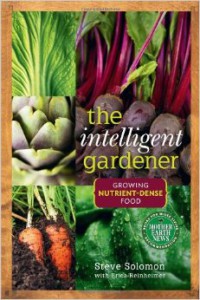
Creating a Forest Garden: Working With Nature To Grow Edible Crops
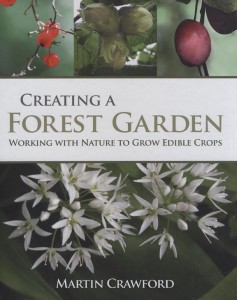
Create an Oasis With Greywater
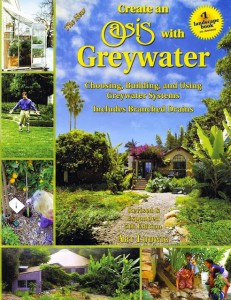
Paradise Lot
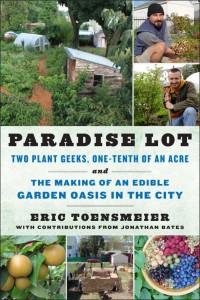
Botany in a Day
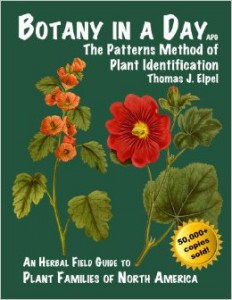
Breed Your Own Vegetable Varieties
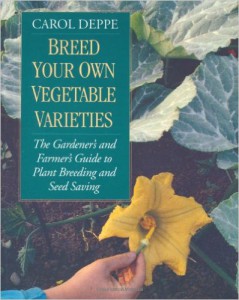
Roots Demystified
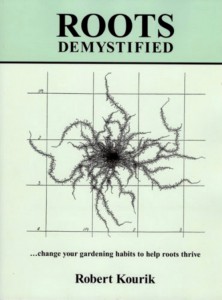
Beautiful Corn
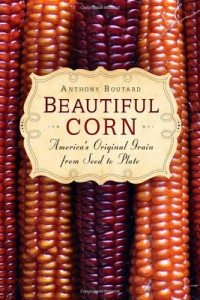
And with that, we conclude my list… for now!
Did I miss one of your favorite books in my list of the best gardening books? Let me know in the comments.
*If you buy any of the above books on Amazon via one of my links, I make a small commission and it doesn't cost you any extra. Thank you for supporting this site and my research!


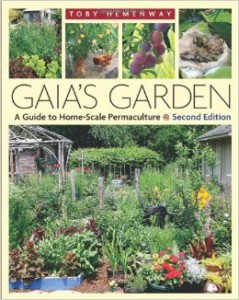
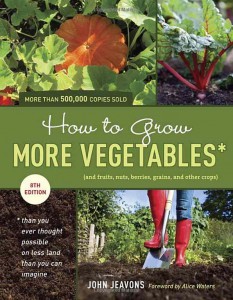
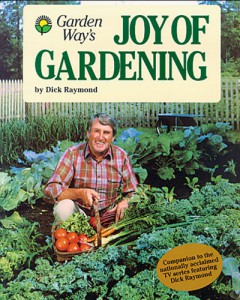
24 comments
I am Mani Raj from Nepal, South Asia. I want to grow more vegetables in my home town Panauti, near Kathmandu. would you like to send some ebooks to my email address that I can read and do in practice. my email add: maniraj1966@yahoo.com Thank you
Man, there is SO much I want to say to this post. I have read most of the books you recommend here.
I know that you are luke warm on Square Foot Gardening, but it got me started in gardening, so I give him credit for getting many people involved in gardening who never thought they could.
I second your recommendations of Paradise Lot, Edible Landscaping and your own Survival Gardening. These are great books. I have read all of them more than once.
I have a couple additions for your readers. One is called the The Quarter-Acre Farm: How I Kept the Patio, Lost the Lawn and Fed My Family for a Year. This is a great book, with a good bit of humor. The other is The Gift of Good Land by Wendell Berry. Berry has written many books and I like most of them, but this one is my favorite. He has compelling arguments for why we should return to the old ways of farming and how much this type of community, care and affection (his term) help all areas of life.
Thanks for the suggestions – I’ll check ’em both out!
Sir I want to be like you , I’ve been focusing more on aruucrltige rather than art lately . I have a hydroponics system,some tomatoes growing in? bottles hanging by a window ( hanging bottle garden ), outside my window I have bonsai and more tomatoes growing.
I’ll second your list as well. I have read most of them. Steve Soloman’s and Ruth Stout’s books are brilliant. They will change you, start there. Teeming with Microbes is very important and is an excellent introduction to soil science. But you have neglected what is without a doubt the absolute best book about gardening ever : One Straw Revolution by Matsuoka Fukuoka. Blows your mind on so many levels, farming, spiritual, Zen thinking, healthy living, and all while teaching you how to get the most production from your garden at less cost and effort. This book will give you a great insight into nature that you will never forget. This is the special kind of insight that could only be divinely inspired. Hint: Fukuoka was permaculture before there was permaculture.
[…] The Best Gardening Books […]
Hi David,
I like your videos a lot. I want to buy 1 or 2 soap nut trees but I could not any nursery that sells that tree. I just wonder if you have any tree or seeds to send to me. If yes, I will pay you the shipping cost. My email address is: tuyetmt@yahoo.com.
My mailing address is:
Tuyet Burke
10914 College Place Drive
Indianapolis, IN 46280
Thank you very much.
I look forward to hearing from you.
Tuyet
I don’t have them anymore – I now live in Central America and can’t help. Try calling Chiappini’s Farm and Native Nursery in Melrose Florida.
It’s great that I had 4 of these books before I even saw this list! I guess I’m doing something right. I’ll keep building my library because you never know. We take for granted the internet will always be there, but a solar flare causing an EMP (or whatever) can change everything in an instant. I’ve become more practical in my prepping…major hurricanes are more apt to happen in my area than anything else. Pine Island, SW FL, Anne Marie
How did you prepare to move all of your garden stuff when you moved? Did you take your seeds? I’m moving to Europe from Fla. Next year and I need to garden there. I have some plants that are personal favorites and I’m hoping that I will still be able to grow them. Any guidance would be appreciated.
I am not sure how the EU works on imports. Bringing cuttings or seeds into the US is very tough – live plants near impossible. If it is like here, I would not try. Probably better to re-acquire.
Hello David!
As a Canadian starting her first indoor garden, do you know of any tried and true indoor gardening books? We had great success with our outdoor garden that we wanted to continue inside now that the snow is flying! Any thoughts or ideas will be appreciated!
Try growing sprouts. Tru leaf market has nice trays, very easy.
HI David, Please check out my book: Designing & Maintaining Your Edible Landscape – Naturally. It has been called “the permaculture book before there was permaculture.” It is very much relevant today even though it was released in 1986. It’s still in print.
Thank you, Robert – I don’t own that one yet, though I have your roots book. I will buy a copy.
Your paperback book is $49.95 on Amazon.
The kindle version is $42.99
If that comes with the Amazon mini greenhouse I’ll reconsider.
I bought it used and it was still $35.
You’ve got all my favorite books so far! I’ll have to check out some of the other ones. I’ve found doing and journaling is better than reading, unless you read from someone who kept a good journal, which is many of the books above.
Yes – it is hard to beat experience. Though I learn a lot by reading, then trying.
I just found out about you through the ice age farmer! I wish I had found you sooner! Can you make a list/video/blog post about any other old-timey type survival books you recommend outside of gardening? I know you’re a gardener but I like the way you think about survival and would like to know what other books have helped you to prepare to survive in other ways like survival goats/animals, heat/cooling without solar, etc… Thank you!
Welcome, Mariana. There is a very good list here:
https://soilandhealth.org/
That is Steve Solomon’s site.
I’m currently reading JADAM Organic Farming. This is a Korean farming method that uses brews similar to Dave’s swamp water. Any thoughts?
You might like “Ten Acres Enough” by Edmund Morris. Don’t let the 1867 publication date fool you, this book has an attitude to fits right in with the permaculture movement. Plus the author has a way with words that only a 19th century gentleman steeped in King James Bible readings would have. It reads like I’d imagine William Shakespeare would write if he ever decided to wax eloquent about manure. It’s still in print but also free online: https://archive.org/details/tenacresenougha02morrgoog
Thank you – I’ll buy a copy
Comments are closed.